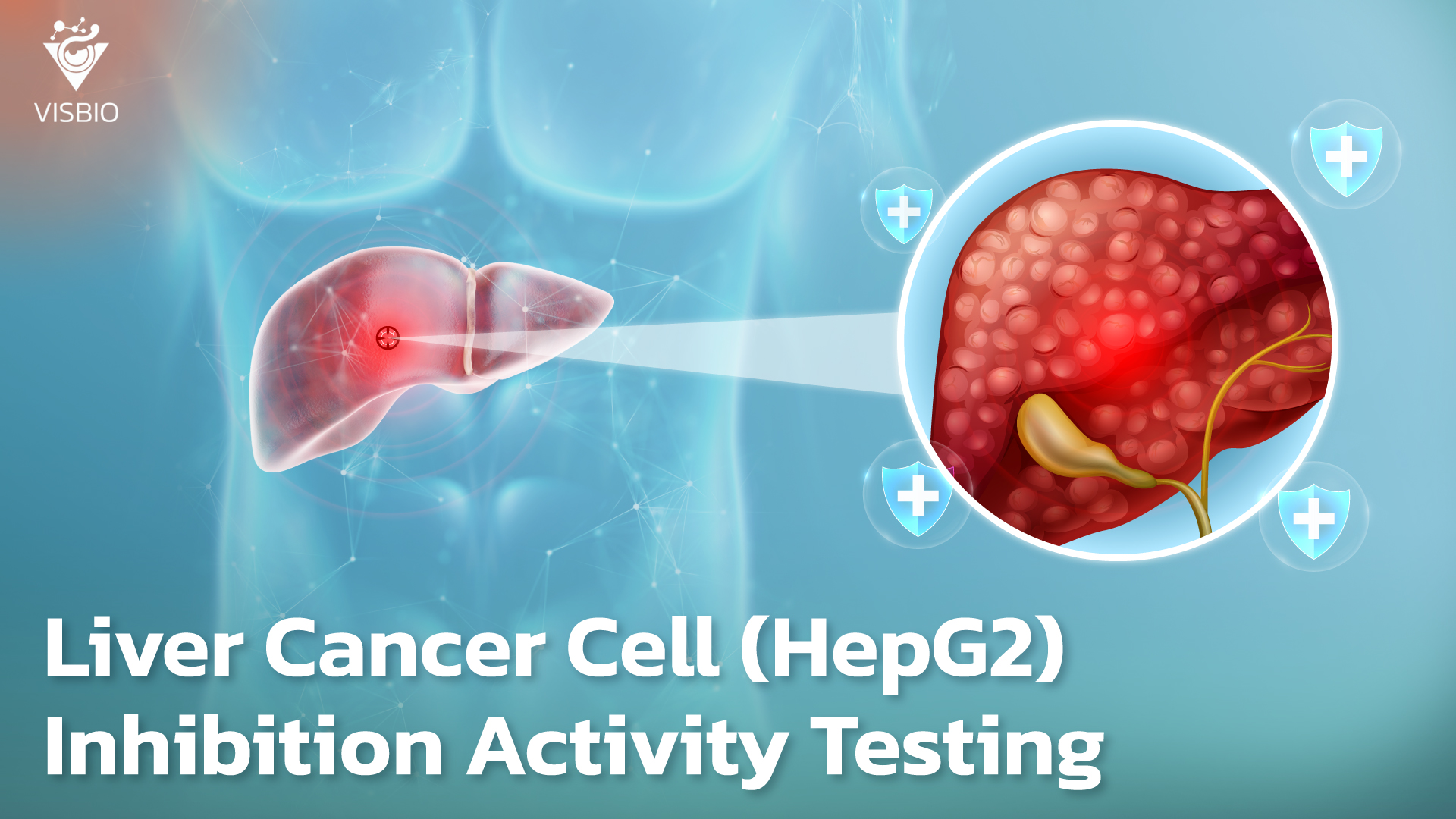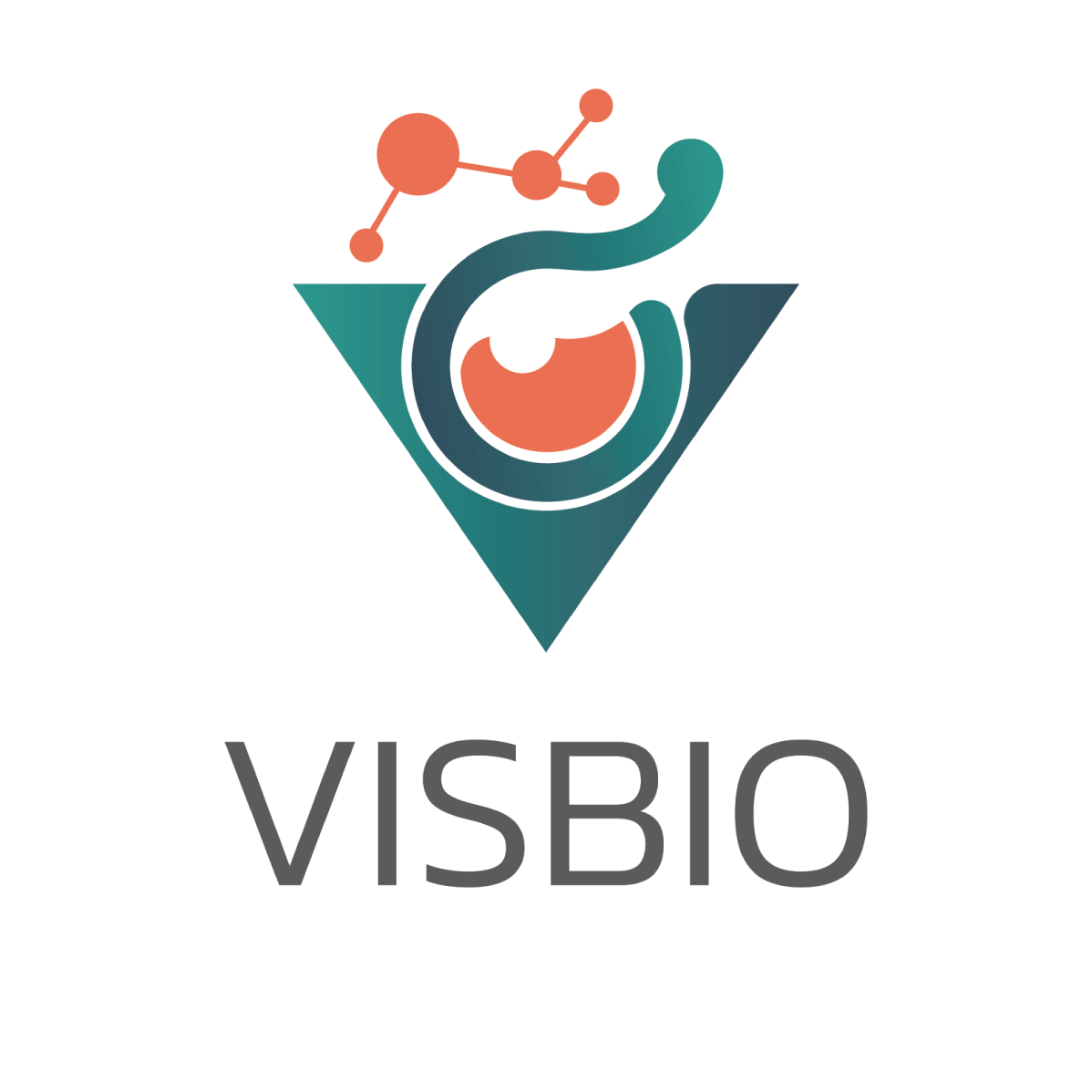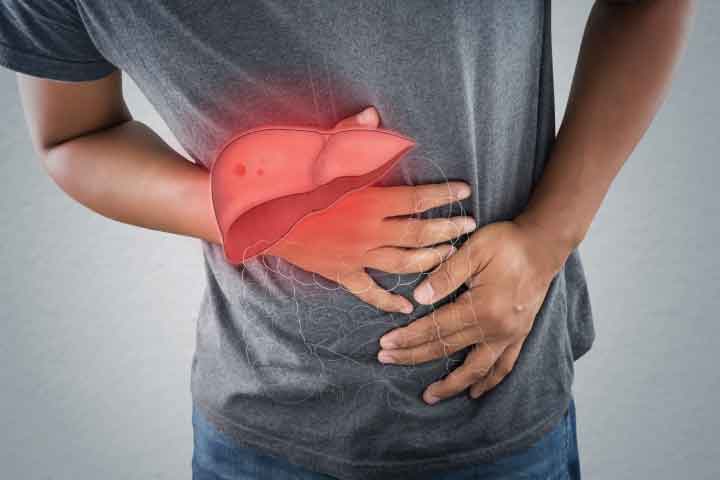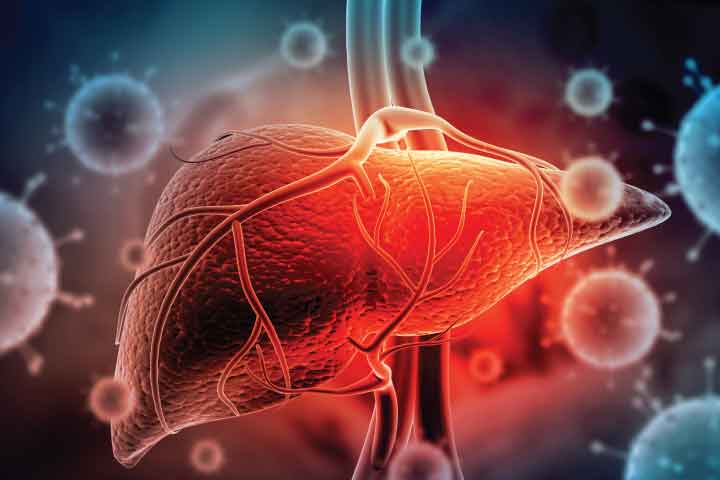
Information for testing service inhibition activity on liver cancer cells (HepG2)
VISBIO Co., Ltd offers a service for testing and analyzing the inhibition activity on liver cancer cells (HepG2). This testing is conducted by scientific experts using 2D cell culture. It is suitable for in-depth research aimed at developing herbal products capable of inhibiting liver cancer cells.
Liver cancer is one of the prevalent cancer types in Thailand, as reported by the National Cancer Institute in the year 2021. Liver cancer is categorized into two types: primary liver cancer, which originates from the liver tissue itself and involves abnormal cell division, and secondary liver cancer, which results from the spread of cancer cells from other organs such as the pancreas, stomach, colon, kidneys, lungs, or breast. HepG2 liver cancer cells are commonly used for studying the inhibition of liver cancer cells, both outside of cells or within well plates under 2D or 3D cell culture conditions for anti-cancer research using cell culture.
Get to Know Liver Cancer
Liver cancer is one of the prevalent cancer types in Thailand, according to data from the National Cancer Institute in 2021. It ranks as the number one cancer among Thai males and the fifth among Thai females. Liver cancer is more common in males, occurring approximately three times more frequently than in females.
Liver cancer is categorized into two types: primary liver cancer, which originates from liver tissue, resulting from abnormal cell division and an increased number of cells, ultimately leading to liver cancer cells. This type is called primary liver cancer or hepatocellular carcinoma. The other type results from cancer cells spreading from other organs such as the pancreas, stomach, colon, kidneys, lungs or breast to the liver. This type is referred to as secondary liver cancer.
Risk factors and causes of liver cancer include infection with hepatitis B and C viruses, which are transmitted through blood contact and sexual intercourse. Chronic hepatitis B and C infections can lead to chronic liver inflammation, fibrosis, cirrhosis, and eventually, liver cancer. Additionally, regular alcohol consumption, fatty liver conditions, and the consumption of foods contaminated with aflatoxin, a highly carcinogenic substance, are contributing factors. Aflatoxin is often found in dried foods such as peanuts, dried shrimp, and garlic, as well as in foods contaminated with aflatoxin-producing molds. Moreover, the regular consumption of foods containing nitrosamines or sodium nitrite, which are carcinogenic substances, can also increase the risk of liver cancer. Manufacturers often use sodium nitrite as a preservative in foods like sausages, ham, bacon, luncheon meat, and pickled fish. These various factors increase the susceptibility to liver cancer.
Liver Cancer Cells (HepG2)
Liver cancer cells (HepG2) are a type of liver cancer cells commonly used for studying the inhibition of liver cancer cells, either outside of cells or in Well Plate during cell culture, both in two-dimensional (2D) or three-dimensional (3D) conditions for anti-cancer research, in cell culture.
Testing Liver Cancer Cells (HepG2) in Cell Culture for Anti-Cancer Research
Currently, there is the development of herbal products, herbal extracts, dietary supplements, or medicines to be used for nourishing or preventing liver inflammation. These products can be tested at the cellular level regarding their toxicity to cancer cells, inhibitory properties, or suitable concentrations for inhibiting Liver cancer cells (HepG2).
The testing process involves taking cells or tissues directly from living organisms and culturing them under controlled conditions to allow the cancer cells to grow, proliferate, and behave similarly to cancer cells grown in laboratory animals or inside the human body. Studying the cellular level is a preliminary test before moving on to animal testing or subsequent clinical trials.
Figure demonstrating an example of 2D cell culture in an in-vitro setting used for studying cell biology and cancer research (adapted from Gaebler et al., 2017).
Testing the inhibitory effects on Liver cancer cells (HepG2) using the MTT assay.
Testing the inhibitory effects on Liver cancer cells (HepG2), cultured at the cellular level or in a Well Plate, using the Methyl tetrazolium 3-[4, 5-Dimethylthiazol-2-yl]-2,5-diphenyltetrazolium bromide (MTT) assay. The MTT assay is a method for testing the inhibitory effects on cancer cells in microplates based on the enzymatic activity of dehydrogenases in mitochondria. The yellow MTT (3-[4, 5-Dimethylthiazol-2-yl]-2,5-Diphenyltetrazolium Bromide) dye is transformed into a purple formazan product.
Thus, the formazan indicates cell viability, where dead cancer cells appear colorless, and live cancer cells exhibit purple formazan within the cells. When dissolved in a solvent like DMSO, it yields a blue-purple solution that can be quantified for absorbance using a spectrophotometer, directly proportional to the amount of live cells. This is then used to calculate the percentage of cell survival compared to a standard substance, reporting the results as % cell inhibition or the concentration of the substance that inhibits cancer cell growth by 50% (IC50).
Literature:
- บทความสุขภาพ มะเร็งตับ … โรคร้ายอันตรายถึงชีวิต, โรงพยาบาลศิริราช ปิยะมหาราชการุณย์
- มะเร็งตับ อีกหนึ่งในโรคมะเร็งที่พบบ่อย, คณะแพทยศาสตร์ โรงพยาบาลรามาธิบดี มหาวิทยาลัยมหิดล
- แผนยุทธศาสตร์สถาบันมะเร็งแห่งชาติ, สถาบันมะเร็งแห่งชาติ กรมการแพทย์ กระทรวงสาธารณสุข, พ.ศ. 2562 – 2565
- สุขภาพคนไทย 2564, 10 สถานการณ์เด่นทางสุขภาพ, สถาบันวิจัยประชากรและสังคม มหาวิทยาลัยมหิดล ร่วมกับ สำนักงานกองทุนสนับสนุนการสร้างเสริมสุขภาพ, 2564
- ทะเบียนมะเร็งระดับโรงพยาบาล, สถาบันมะเร็งแห่งชาติ กรมการแพทย์ กระทรวงสาธารณสุข, พ.ศ.2564
- ศิวนันท์ ฟองจันทร์, สุรีย์พันธุ์ วรพงศธร, พนัชกร ภวภูตานนท์ ณ มหาสารคาม, และเกษม ชูรัตน์. การป้องกันและควบคุมมะเร็งตับ, วารสารโรคมะเร็ง, 2562; 39(2): 64-74.
- Gaebler M, Silvestri A, Haybaeck J, Reichardt P, Lowery CD, Stancato LF, et al. Three-dimensional patient-derived In vitro sarcoma models: promising tools for improving clinical tumor management. Front Oncol 2017; 7: 203.
- Donato MT, Tolosa L, Gómez-Lechón MJ. Culture and Functional Characterization of Human Hepatoma HepG2 Cells. Methods Mol Biol. 2015;1250:77-93. doi: 10.1007/978-1-4939-2074-7_5. PMID: 26272135.





